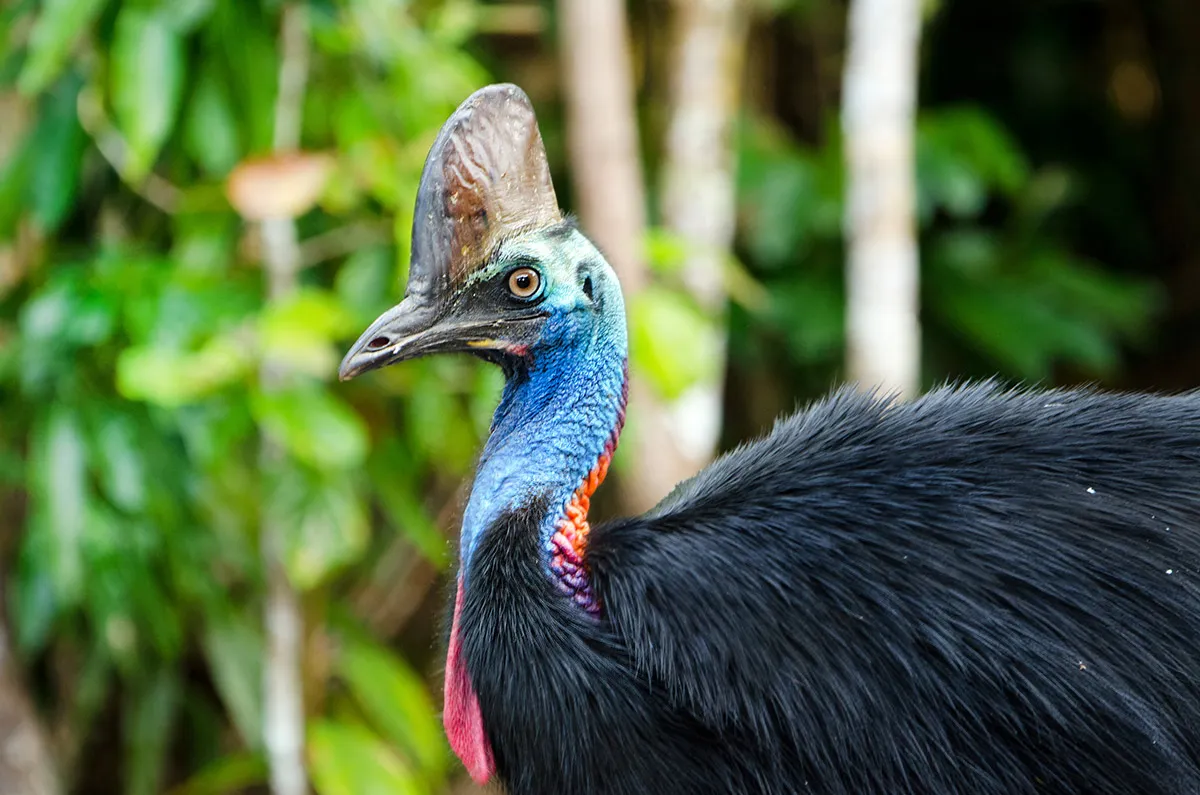Up to 18,000 years ago, humans in New Guinea were hatching cassowary chicks and may have raised them to adulthood, a new study has found. This suggests that chickens may not in fact have been the first domesticated birds.
Cassowaries are big, flightless birds native to Australia, Aru Islands and New Guinea. The species make up three of the top 10 largest birds in the world. “This is not some small fowl, it is a huge, ornery, flightless bird that can eviscerate you,” said Kristina Douglass, assistant professor of anthropology and African studies, Penn State. “Most likely the dwarf variety that weighs 20kg.”
The chicks are still traded as a commodity in New Guinea today, and will easily imprint on humans. If the first thing a chick sees is a human, it will follow them around as though they were its mother.
The researchers studied eggshells from between 18,000 and 6,000 years ago to determine how old the embryos inside were when they were cracked. Since chicks get calcium from their eggshells, the team could study how pits developed on the inside to establish how developed they were.
“What we found was that a large majority of the eggshells were harvested during late stages,” said Douglass. “The eggshells look very late; the pattern is not random.”
Read more about bird evolution:
While it’s possible they were eating baluts – an Asian street food that involves boiling a nearly-developed chick in its shell – many of the samples didn’t show any evidence of burn marks, suggesting that they were hatched. This is particularly remarkable, given that the domestication of chickens happened thousands of years afterwards.
“The implications of this are enormous!” said Dr Hanneke Meijer, a palaeontologist who was not involved with the research. “It is generally considered that chickens were the first domesticated birds (although the date and place of domestication, whether it was one event or several, remains highly contested), but this research shows that this might not be the case.”

The team can’t say for sure what the birds were used for. The archaeologists who originally studied the site found no evidence that the cassowaries were kept in a pen. However, the only cassowary bones found at the site were from the leg and thigh, suggesting that these birds had been hunted and only the meatiest parts were taken home.
“There is evidence that cassowaries were transposed to other nearby islands and this is easiest to do with chicks because adult cassowaries can be vicious. So they were likely seen as a source of food,” said Meijer. “But human-bird relationships are often multifaceted and the birds might have been kept for their feathers, or even played a role in symbolism and rituals, as is the case today.
“Finally, I can also imagine that if we were to go back in time to New Guinea in the early Holocene, we might also have seen children chasing around and playing with little cassowary chicks.”
About our expert, Dr Hanneke Meijer
Hanneke is Associate Professor & Curator of Osteology at the University Museum of Bergen, Norway. She specialises in avian evolution and biodiversity.
Read more about birds: